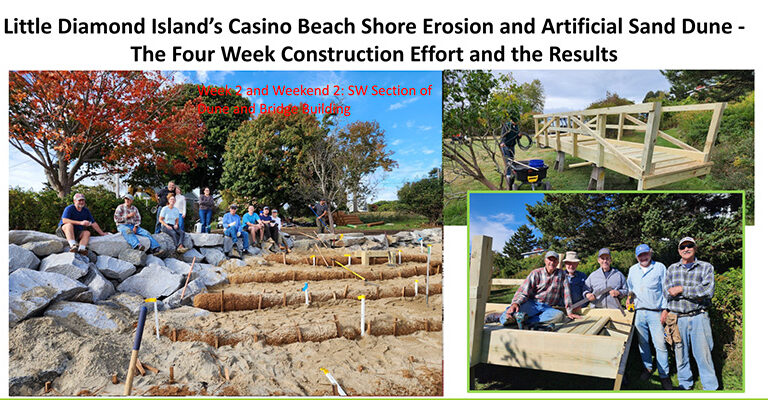On May 4, I took part in Belfast’s version of “Jane’s Walk,” an event inspired by Jane Jacobs, a community activist and author of 1961’s The Death and Life of Great American Cities. She critiqued, quite presciently, the urban renewal impetus of that era.
The concept of the Jane’s Walks, which have been loosely coordinated by the nonprofit Maine Preservation, is to organize volunteer-led “walking conversations” in which participants take in a town while “personal observations and local history” are discussed. A couple of years ago, I attended Stonington’s Jane’s Walk in which a tour of the village area had various players stepping out of buildings to share local history.
In Belfast, former mayor and city councilor and downtown booster Mike Hurley based his 90-minute talk on his recollections of the community’s business history, all from the perspective of the intersection of Main and High streets.
That visit had me wondering about the “past their prime” idea. Would locals walking those same streets recognize each other?
A self-described hippie who arrived here in the 1970s, Hurley became a serial entrepreneur, a newspaper columnist, a civic improvement subversive, and finally a city official. Having arrived in town in the mid-1980s, I was struck by how many of the businesses and local characters that Hurley brought to life in story were those I had never known.
And that’s something to reflect on—change is a constant in our communities, but is there a point at which they evolve away from an ideal, away from a vitality and healthy social and economic stratification?
I’ve heard some in Belfast who grew up here lament that they no longer know many of the people they now pass on the sidewalk. Is the town losing its heart and soul, or are the old-timers not making an effort to stay in touch?
More questions: Do communities have their “good old days?” Do they peak? And if so, how do we measure the qualities that contribute to that status?
In recent years, my wife and I have had to drive her parents to Logan and then pick them up there several weeks later. To break up the long trips, we’ve begun planning visits to Massachusetts coastal towns. The first two visits, to Newburyport and Ipswich, were sort of pilgrimages to This Old House project houses, my having become curious about those host communities on seeing them on TV.
Even in April, Newburyport was a busy town with beautiful 19th century architecture and a long waterfront walkway. We found the TOH project house and—just between us, dear reader—saw that some of the exterior paint had peeled back to bare wood. Maybe they had rushed to complete the project.
Ipswich, I learned from the TV show, had the most First Period homes in the U.S., those built in the 1625-1725 era. We didn’t have a lot of time that day, and we did find a nice walk that let us see some of those old houses, but the main drag through town was quite busy with midday traffic.
That visit had me wondering about the “past their prime” idea. Would locals walking those same streets recognize each other, or had it become a bedroom community for those who work closer to Boston?
Marblehead, with streets that looked like they’d been drawn by throwing bits of string onto a map, was a visual delight. The central square with its looming public building was like a lighthouse for us as we wandered the winding streets, gawking at the colorfully painted old homes. The snug harbor is probably chockful of boats in summer.
Rockport also had a central, waterfront square and a small, very protected harbor. What probably had been a commercial wharf is now lined with tourist-oriented businesses; nice in April, but probably jammed with pedestrians in summer.
On one of the trips, we stopped in Portsmouth, N.H., a city we never think to visit. Since it is circumscribed by the river and I-95, it has a pleasing orderly and compact center, and may give Portland’s Old Port a run for its money.
The oral history focus of the Jane’s Walk events is one way to keep us connected with our past while making us mindful of what forces bring change.
Next year, Jane’s Walks in Maine will be held Saturday, May 3. Consider organizing or at least attending one in your town.
Tom Groening in editor of The Working Waterfront. He may be contacted at tgroening@islandinstitute.org.





